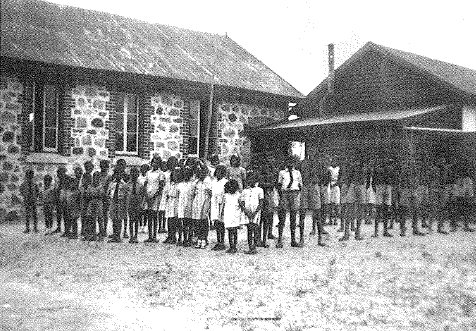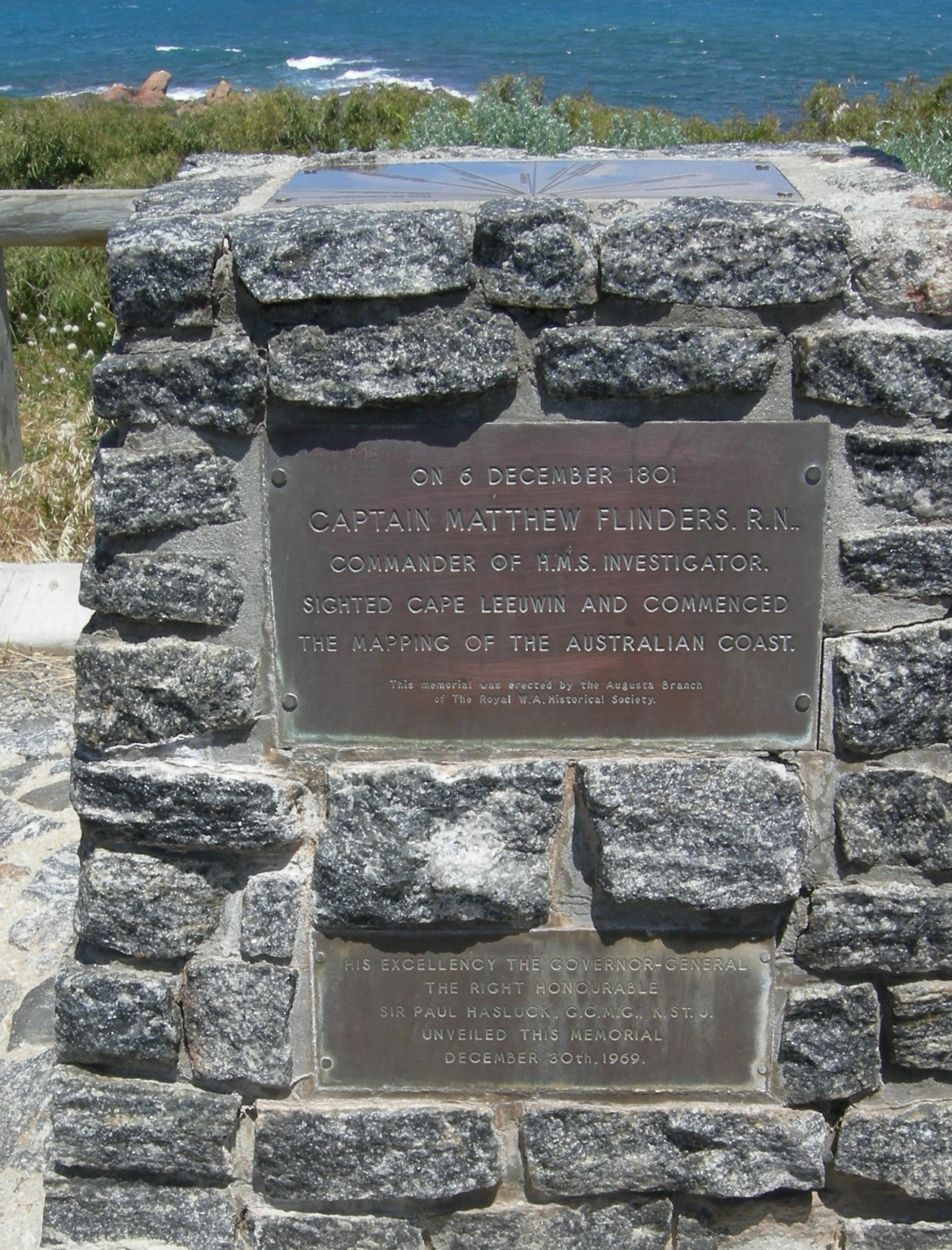|
Wadandi
The Wadandi, also spelt Wardandi and other variants, are an Aboriginal people of south-western Western Australia, one of fourteen language groups of the Noongar peoples. Name There are at least three theories about the meaning of the tribal ethnonym. One informant suggested it reflected a word for "crow" (''wardan''), a theory that sits poorly with early word lists that state that the Wardandi word for that bird is ''kwa:kum''. A second view argues for the sense of "seacoast people"; one source in support of this cites a word variously given as ''waatu'' or ''waatern'' with the meaning "the ocean". A third hypothesis has it that the name is derived from the word for "no". Country Wadandi traditional country covers an estimated . Predominantly coastal, it encompasses Busselton and the areas from Bunbury to Cape Leeuwin and Geographe Bay. Inland it reaches the area around Nannup. They were the sole inhabitants of the area for an estimated 45,000 years before the arrival of Bri ... [...More Info...] [...Related Items...] OR: [Wikipedia] [Google] [Baidu] |
Augusta, Western Australia
Augusta is a town on the south-west coast of Western Australia, where the Blackwood River flows into Flinders Bay. It is the nearest town to Cape Leeuwin, on the furthest southwest corner of the Australian continent. In the it had a population of 1,091; by 2016 the population of the town was 1,109 (excluding East Augusta). The town is within the Shire of Augusta-Margaret River local government area, and is in the Leeuwin Ward. It is connected by public transport to Perth via Transwa coach service SW1. The town has its own airport. Augusta was a summer holiday town for many during most of the twentieth century, but late in the 1990s many people chose to retire to the region for its cooler weather. As a consequence of this and rising land values in the Augusta-Margaret River area, the region has experienced significant social change. History Noongar peoples, the Aboriginal Australian peoples of south-western Australia, inhabited the area for an estimated 45,000 years before ... [...More Info...] [...Related Items...] OR: [Wikipedia] [Google] [Baidu] |
Bunbury, Western Australia
Bunbury () is a coastal city in the Australian state of Western Australia, approximately south of the state capital, Perth. It is the state's third most populous city after Perth and Mandurah, with a population of approximately 75,000. Located at the south of the Leschenault Estuary, Bunbury was established in 1836 on the orders of Governor James Stirling (Royal Navy officer), James Stirling, and named in honour of its founder, Lieutenant (at the time) Henry William St Pierre Bunbury, Henry Bunbury. A port was constructed on the existing natural harbour soon after, and eventually became the main port for the wider South West (Western Australia), South West region. Further economic growth was fuelled by completion of the South Western Railway, Western Australia, South Western Railway in 1893, which linked Bunbury with Perth. Greater Bunbury includes four Local government areas of Western Australia, local government areas (the City of Bunbury and the shires of Shire of Capel, ... [...More Info...] [...Related Items...] OR: [Wikipedia] [Google] [Baidu] |
Noongar
The Noongar (, also spelt Noongah, Nyungar , Nyoongar, Nyoongah, Nyungah, Nyugah, and Yunga ) are Aboriginal Australian people who live in the South West, Western Australia, south-west corner of Western Australia, from Geraldton, Western Australia, Geraldton on the west coast to Esperance, Western Australia, Esperance on the south coast. There are 14 different groups in the Noongar cultural bloc: Amangu, Ballardong, Yued, Kaneang, Koreng, Mineng, Njakinjaki, Njunga, Pibelmen, Pindjarup, Wadandi, Whadjuk, Wiilman and Wudjari. The Noongar people refer to their land as . The members of the collective Noongar cultural bloc descend from people who spoke several languages and dialects that were often Mutual intelligibility, mutually intelligible. What is now classified as the Noongar language is a member of the large Pama–Nyungan languages, Pama–Nyungan language family. Contemporary Noongar speak Australian Aboriginal English (a dialect of the English language) laced with Noong ... [...More Info...] [...Related Items...] OR: [Wikipedia] [Google] [Baidu] |
Traditional Owners
Native title is the set of rights, recognised by Australian law, held by Aboriginal and Torres Strait Islander groups or individuals to land that derive from their maintenance of their traditional laws and customs. These Aboriginal title rights were first recognised as a part of Australian common law with the decision of '' Mabo v Queensland (No 2)'' in 1992. The doctrine was subsequently implemented and modified via statute with the '' Native Title Act 1993''. The concept recognises that in certain cases there was and is a continued beneficial legal interest in land held by Indigenous peoples which survived the acquisition of radical title and sovereignty to the land by the Crown. Native title can co-exist with non-Aboriginal proprietary rights and in some cases different Aboriginal groups can exercise their native title rights over the same land. The Federal Court of Australia arranges mediation in relation to claims made by Aboriginal and Torres Strait Islander peoples, ... [...More Info...] [...Related Items...] OR: [Wikipedia] [Google] [Baidu] |
Royal Anthropological Institute Of Great Britain And Ireland
The Royal Anthropological Institute of Great Britain and Ireland (RAI) is a long-established anthropological organisation, and Learned Society, with a global membership. Its remit includes all the component fields of anthropology, such as biological anthropology, evolutionary anthropology, social anthropology, cultural anthropology, visual anthropology and medical anthropology, as well as sub-specialisms within these, and interests shared with neighbouring disciplines such as human genetics, archaeology and linguistics. It seeks to combine a tradition of scholarship with services to anthropologists, including students. The RAI promotes the public understanding of anthropology, as well as the contribution anthropology can make to public affairs and social issues. It includes within its constituency not only academic anthropologists, but also those with a general interest in the subject, and those trained in anthropology who work in other fields. History The institute's fellows a ... [...More Info...] [...Related Items...] OR: [Wikipedia] [Google] [Baidu] |
Royal Geographical Society Of Australasia
The Royal Geographical Society of Australasia, formerly the Geographical Society of Australasia, was an Australian organisation formed in 1883 until it split up into various state organisations in the 1920s. The South Australian and Queensland branches continue as the Royal Geographical Society of South Australia (RGSSA) and Royal Geographical Society of Queensland (RGSAQ) respectively. History On 22 June 1883, the Geographical Society of Australasia started at a meeting in Sydney, New South Wales, Australia. A branch was formed in Victoria in the same year. In July 1885, both the Queensland and the South Australian branches started. In July 1886 the society became the Royal Geographical Society of Australasia. The New South Wales branch's new constitution in 1886 widened its scope to encourage interest in scientific, commercial, educational and historical aspects of geography. The Society sponsored several important expeditions, notably the New Guinea Exploration Expeditio ... [...More Info...] [...Related Items...] OR: [Wikipedia] [Google] [Baidu] |
Department Of Aboriginal Affairs (Western Australia)
The Department of Aboriginal Affairs (Western Australia) is the former government authority that was involved with the matters of the Aboriginal population of Western Australia between 2013 and 2017. Aborigines Protection Board Prior to the creation of the Aborigines Department in 1898, there had been an Aborigines Protection Board, which operated between 1 January 1886 and 1 April 1898 as a Statutory authority. It was created by the ''Aborigines Protection Act 1886'' (WA), also known as the ''Half-caste act'', ''An Act to provide for the better protection and management of the Aboriginal natives of Western Australia, and to amend the law relating to certain contracts with such Aboriginal natives'' (statute 25/1886); ''An Act to provide certain matters connected with the Aborigines'' (statute 24/1889). The Board was replaced in 1898 by the Aborigines Department. Current status The department took its current name in May 2013. On 28 April 2017 Premier Mark McGowan announced ... [...More Info...] [...Related Items...] OR: [Wikipedia] [Google] [Baidu] |
Toponym
Toponymy, toponymics, or toponomastics is the study of ''wikt:toponym, toponyms'' (proper names of places, also known as place names and geographic names), including their origins, meanings, usage, and types. ''Toponym'' is the general term for a proper name of any geographical feature, and full scope of the term also includes proper names of all cosmographical features. In a more specific sense, the term ''toponymy'' refers to an inventory of toponyms, while the discipline researching such names is referred to as ''toponymics'' or ''toponomastics''. Toponymy is a branch of onomastics, the study of proper names of all kinds. A person who studies toponymy is called ''toponymist''. Etymology The term ''toponymy'' comes from / , 'place', and / , 'name'. The ''Oxford English Dictionary'' records ''toponymy'' (meaning "place name") first appearing in English in 1876 in the context of geographical studies. Since then, ''toponym'' has come to replace the term ''place-name'' in profe ... [...More Info...] [...Related Items...] OR: [Wikipedia] [Google] [Baidu] |
Australian Broadcasting Corporation
The Australian Broadcasting Corporation (ABC) is Australia’s principal public service broadcaster. It is funded primarily by grants from the federal government and is administered by a government-appointed board of directors. The ABC is a publicly-owned statutory organisation that is politically independent and accountable; for example, through its production of annual reports, and is bound by provisions contained within the Public Interest Disclosure Act 2013 and the Public Governance, Performance and Accountability Act 2013, with its charter enshrined in legislation, the ''Australian Broadcasting Corporation Act 1983''. ABC Commercial, a profit-making division of the corporation, also helps generate funding for content provision. The ABC was established as the Australian Broadcasting Commission on 1 July 1932 by an Act of Federal Parliament. It effectively replaced the Australian Broadcasting Company, a private company established in 1924 to provide programming for A ... [...More Info...] [...Related Items...] OR: [Wikipedia] [Google] [Baidu] |
Flinders Bay
Flinders Bay is a bay in western Australia, immediately south of the townsite of Augusta, Western Australia, Augusta, and close to the mouth of the Blackwood River. The bay lies to the north east of Cape Leeuwin which is the most south-westerly mainland point of the Australia (continent), Australian Continent, in the state of Western Australia. Bay On Matthew Flinders Terra Australis Sheet 1 1801–1803 the area was originally known as ''Dangerous Bight''. The bay runs from Point Matthew East North East of Cape Leeuwin to Ledge Point some east. It was named by either James Stirling (Australian governor), James Stirling or Septimus Roe in 1829 or 1830. Matthew Flinders was first in the Bay on 7 December 1801. Railway terminus and jetty The name of the Flinders Bay area is tied to the small settlement that had been a whaling and fishing location, as well as the terminus of the Busselton to Flinders Bay branch railway railway line (1920s, closed 1957). The name is also tied t ... [...More Info...] [...Related Items...] OR: [Wikipedia] [Google] [Baidu] |
Outcrop
An outcrop or rocky outcrop is a visible exposure of bedrock or ancient superficial deposits on the surface of the Earth and other terrestrial planets. Features Outcrops do not cover the majority of the Earth's land surface because in most places the bedrock or superficial deposits are covered by soil and vegetation and cannot be seen or examined closely. However, in places where the overlying cover is removed through erosion or tectonic uplift, the rock may be exposed, or ''crop out''. Such exposure will happen most frequently in areas where erosion is rapid and exceeds the weathering rate such as on steep hillsides, mountain ridges and tops, river banks, and tectonically active areas. In Finland, glacial erosion during the last glacial maximum (ca. 11000 BC), followed by scouring by sea waves, followed by isostatic uplift has produced many smooth coastal and littoral outcrops. Bedrock and superficial deposits may also be exposed at the Earth's surface due to human exca ... [...More Info...] [...Related Items...] OR: [Wikipedia] [Google] [Baidu] |




